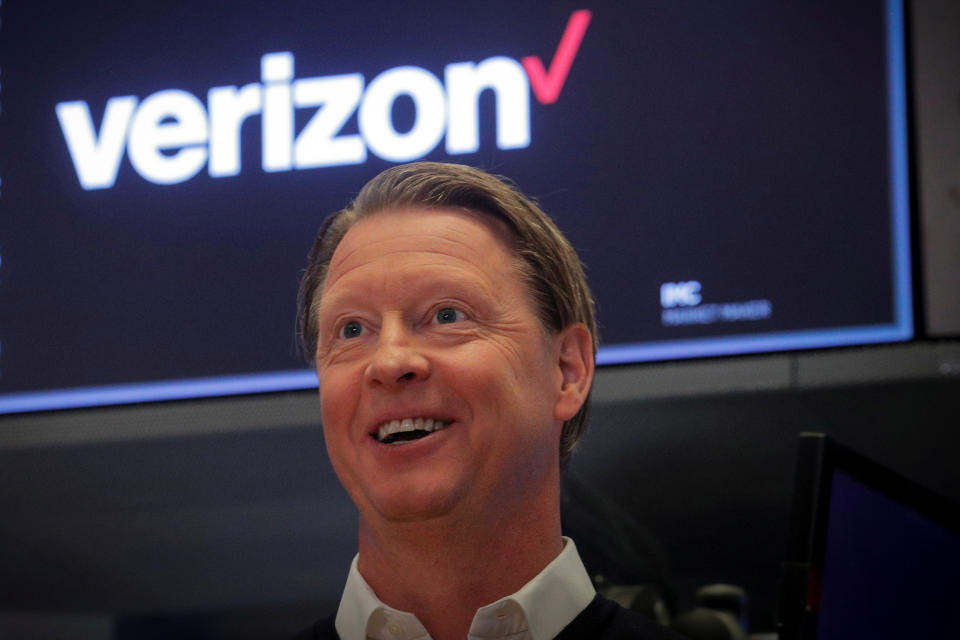Verizon Q3 earnings boosted by strong wireless growth
Verizon Wireless (VZ) on Friday reported third quarter earnings that beat analysts' expectations on the top and bottom line, aided by strong growth in its wireless business.
Here are the most important numbers to watch as compiled by Bloomberg estimates.
Revenue: $32.9 billion versus $32.7 billion expected
Adjusted earnings per share: $1.25 versus $1.24 expected
Post paid wireless customer additions: 601,00 retail net additions — which more than doubled from the comparable year-ago quarter.
The stock, which ended trading Thursday at $60.58, jumped by more than a percent in pre-market action.
Verizon, the parent company of Yahoo Finance, said that it saw increases in both post-paid wireless customers and pre-paid customers. The company also saw 30,000 net additions to its Fios Internet business, but a whopping 67,000 net customer losses in its Fios Video arm. Verizon said the loss was the result of customers continuing to move to over-the-top video offerings.
Verizon announced a series of new unlimited data plans in August that amounted to price cuts of $5 on its existing offerings. The company essentially took its previous three plans and split the mid-range plan into two new options, both priced at $80 compared to $85 before the cuts.

The company's entry-level plan, which previously started at $75, now starts at $70. Then there's the top-of-the-line plan, which dropped in price from $95 per line to $90. The expectation is for the lower prices to have lured customers from Verizon's less expensive shared data plans to the company's more lucrative unlimited services.
It's important to note, however, that Verizon's unlimited plans have built-in data caps. If the threshold is reached, it allows the company to throttle your data to lower speeds during times of network congestion.
While Verizon has been heavily advertising its 5G data, the company is unlikely to see profits from the faster service anytime soon. That's because the carrier is still in the early stages of building out the new network. In Q3, the company reported that it launched 5G services in 13 new cities, as well as in sports stadiums and venues.
Verizon has also been criticized for its approach to 5G deployment. The company is focusing on the fastest possible type of 5G, millimeter wave 5G, while losing out to competitors that are instead looking toward mid-frequency and low-frequency 5G, which though not as fast as millimeter wave, can reach users across far greater distances.
Eventually, each of the major U.S. carriers will need to offer 5G on all three categories of frequency to reach as many customers as possible. And while that may take time, it’s also important to remember that the kind of 4G networks we have today took years to reach their current size and speed.
"We are focused on our 5G rollout strategy, looking to deploy next-generation networks while enhancing our industry-leading 4G LTE network. Going into the fourth quarter, we are energized by the strong performance of the business and we are confident in our strategy to drive value for our customers and growth for our shareholders,” chairman and CEO Hans Vestberg said in a statement.
More from Dan:
Microsoft beats on revenue, earnings on strength of cloud business
Nintendo's 'Ring Fit Adventure' gets you in shape while you play
Facebook announces efforts to safeguard 2020 election, fight fake news
Got a tip? Email Daniel Howley at [email protected], and follow him on Twitter at @DanielHowley.
Follow Yahoo Finance on Twitter, Facebook, Instagram, Flipboard, SmartNews, LinkedIn,YouTube, and reddit.
